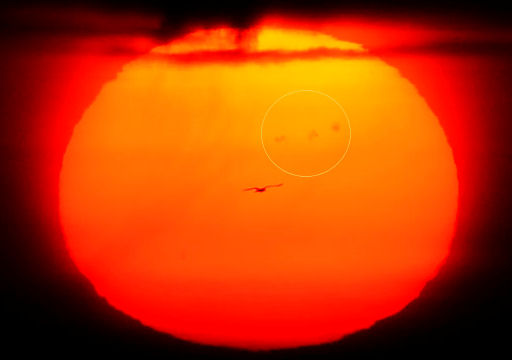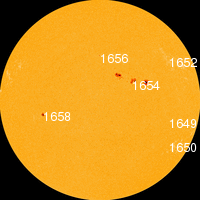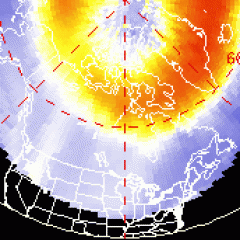INCOMING CME BOOSTS ODDS FOR AURORAS: NOAA forecasters estimate a 30% to 45% chance of polar geomagnetic storms on Jan. 17th when a CME is expected to hit Earth's magnetic field. The impact could spark bright auroras around the Arctic Circle. Aurora alerts: text, voice.
Even before the CME's arrival, auroras are already arcing across the skies of northern Scandinavia. Entitle this photo Reflections:
Rune Bjørkli took the picture on January 15th from Porsanger, Norway. "For this 60 second exposure I used an Olympus E-M5 set at ISO 1600," says Bjørkli. "The long exposure revealed the lights in the water as well as the sky."
Stay tuned to the aurora gallery for more reflections as the CME approaches.
CHANCE OF FLARES: So far today, solar activity is low. However, that could be the calm before the storm. The magnetic field of big sunspot AR1654 has grown more complex. It is now classified as a 'beta-gamma-delta' magnetic field, which means it harbors energy for X-class eruptions. Solar flare alerts: text, voice.
If there is a flare today, the blast would be Earth-directed. This sunrise shot, taken at dawn on Jan. 16th by Jan Koeman on the bank of the Westerschelde River in the Netherlands, shows how AR1654 (circled) is almost directly facing our planet:
"Sunspot complex AR1654-AR1656 was clearly visible through the clouds and mist," says Koeman. "It was a wonderful sunrise even at -8 degrees celsius."

![]()
Solar wind
speed: 412.0 km/sec
density: 15.7 protons/cm3
explanation | more data
Updated: Today at 0057 UT
![]()
X-ray Solar Flares
6-hr max: C2 1923 UT Jan16
24-hr: C2 1923 UT Jan16
explanation | more data
Updated: Today at: 2359 UT
![]()
![]()
![]()
Daily Sun: 16 Jan 13
![]()
![]()
Sunspot AR1654 has a beta-gamma-delta magnetic field that harbors energy for X-class solar flares. Credit: SDO/HMI
![]()
![]()
![]()
Sunspot number: 120
What is the sunspot number?
Updated 16 Jan 2013
Spotless Days
Current Stretch: 0 days
2013 total: 0 days (0%)
2012 total: 0 days (0%)
2011 total: 2 days (<1%)
2010 total: 51 days (14%)
2009 total: 260 days (71%)
Since 2004: 821 days
Typical Solar Min: 486 days
Update 16 Jan 2013
The Radio Sun
10.7 cm flux: 154 sfu
explanation | more data
Updated 16 Jan 2013
![]()
![]()
![]()
Current Auroral Oval:
![]()
Switch to: Europe, USA, New Zealand, Antarctica
Credit: NOAA/POES
![]()
![]()
![]()
Planetary K-index
Now: Kp= 2 quiet
24-hr max: Kp= 3 quiet
explanation | more data
![]()
Interplanetary Mag. Field
Btotal: 9.0 nT
Bz: 0.5 nT north
explanation | more data
Updated: Today at 0057 UT
![]()
![]()
![]()
Coronal Holes: 16 Jan 13
![]()
![]()
There are no large coronal holes on the Earthside of the sun. Credit: SDO/AIA.






